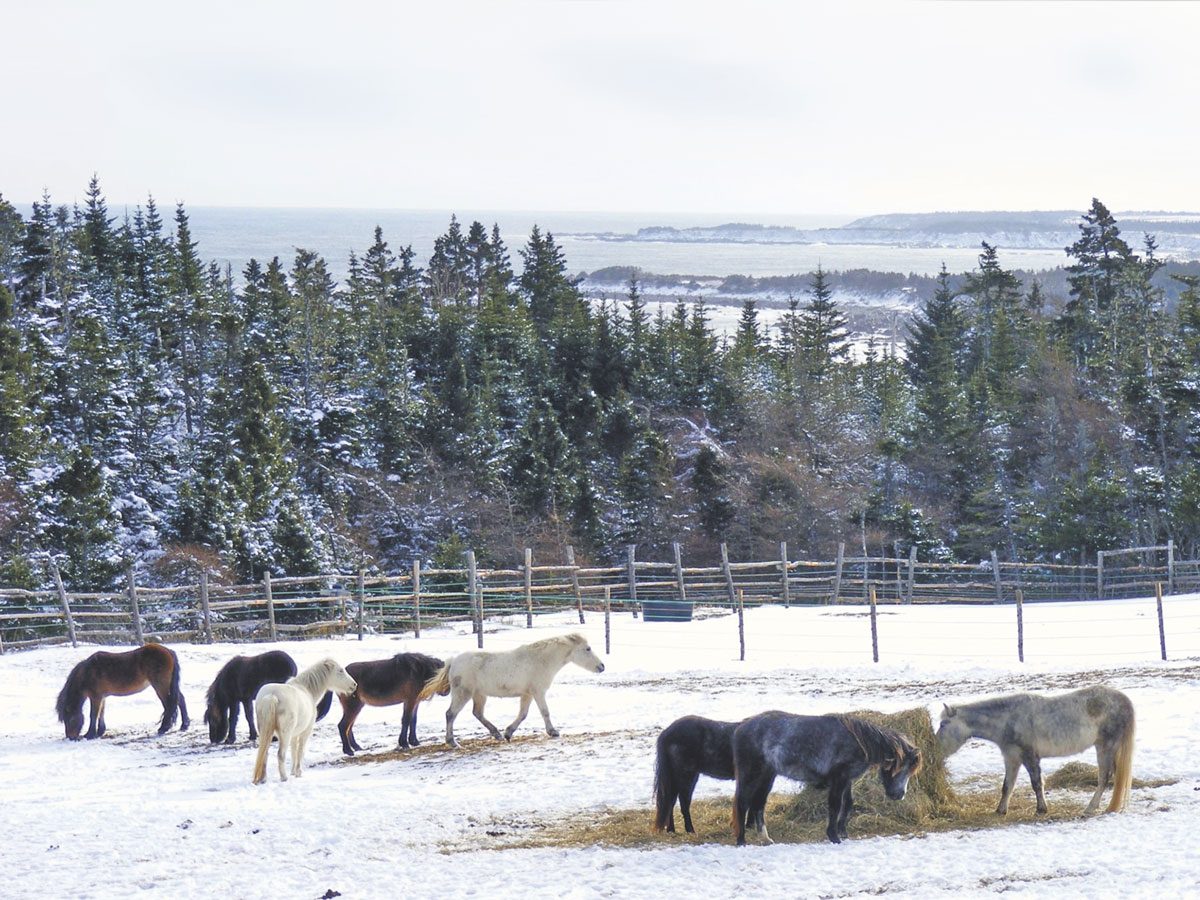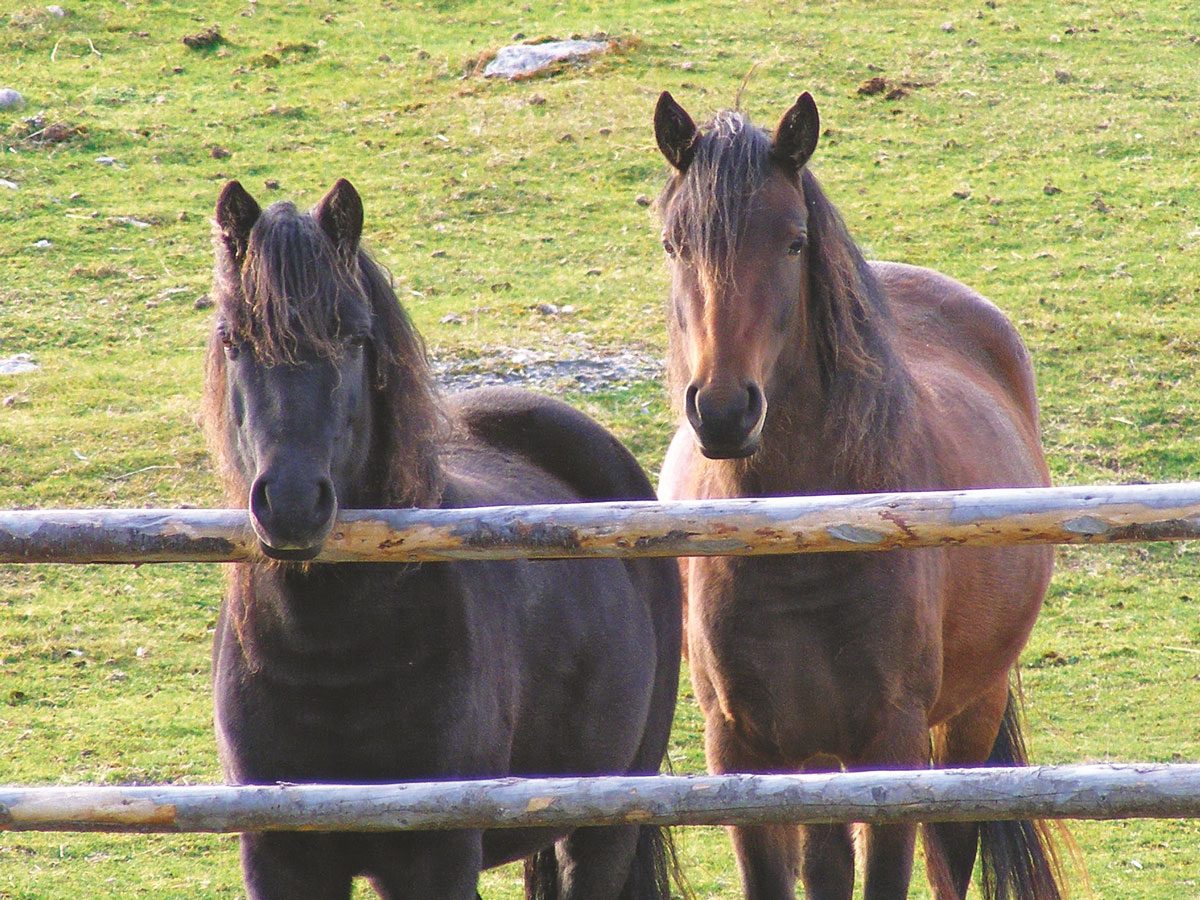
The Plight of the Newfoundland Pony
I grew up next door to a riding stable in a Newfoundland community locally known as The Goulds. The owner/riding instructor took me under her wing as a 10-year-old and taught me how to ride and care for horses and ponies.
I started out with my first Newfoundland pony when I was 13, and I have been hooked on them ever since. It was common to see my pony hitched to a pole in the parking lot of our local supermarket, Bidgood’s, where I’d do some of the family shopping as part of my regular chores. I would ride on the side of the road and some people in their cars would time our speed. I used the ponies for everything from plowing, harrowing and hauling wood and hay to pleasure riding, show jumping and related show events.
As an adult, I still have the privilege of caring for Newfoundland ponies.
I have a small farm located in Cappahayden, which is an outport on the Irish Loop and situated in one of the oldest settled areas of Newfoundland. When I moved here in 2007, I was told that there hadn’t been a Newfoundland pony here for 40 years. The ponies at my farm are still the only Newfoundland ponies in this area. One is owned by a family with a young girl who I have taken under my wing to teach her about the ponies, so hopefully the knowledge I have acquired will continue to be passed along.
The Irish Loop is a well-known tourist route. Here, I welcome visitors who wish to know more about Newfoundland’s heritage ponies. My farm is one where you can pet the resident ponies and ask as many questions as you like about them and their history. I answer the questions to the best of my ability, based on 45 years of knowledge and experience gained from owning, breeding and training these wonderful ponies. I may not be able to answer all the questions coming my way, but I do my best and can offer resources for further information.
Read the inspiring story of how photographing Alberta’s wild horses changed one woman’s life.

Newfoundland’s Only Heritage Animal
I like to introduce visitors to each of my three ponies, providing their names and a little about their respective personalities. People are always fascinated to learn that my current trio of ponies is a little family consisting of a mother and her two daughters sired by different fathers. I explain a little about the history of the breed and also relate the current difficulties it faces.
The population of Newfoundland ponies is like that of the Newfoundland people themselves. It is an older population, and the number of ponies passing on is growing at a faster rate than the new births. If circumstances cannot be changed for the better, it simply will not be possible to sustain the breed, and that, of course, is a serious concern. The Newfoundland pony is already listed as critically endangered, and it is Newfoundland’s only heritage animal.
I breed and tend to many foals, and I am very proud of each of them. Like other breeders of Newfoundland ponies, I am trying to increase their numbers by producing foals and capturing less used blood lines in the process, but that is only part of what must be done. Just as important as facilitating new births is finding good homes for these foals.
For my part, I try to help people interested in purchasing ponies by putting them in touch with breeders who have ponies for sale. I also help people find new homes for ponies when they cannot care for them any longer.
Another serious problem is keeping track of the ponies’ actual whereabouts. Unfortunately, not all owners or breeders keep their paperwork up-to-date with the Newfoundland Pony Society. I try to keep a record of the ponies’ new locations as they are moved around from home to home, so they are not lost to the Newfoundland pony community.
Being hard-working, honest, sociable, trusting, kind, caring and talented are just a few of the breed’s traits. So, if you are shopping for a pony, please check out a Newfoundland pony as one of your better options. Once you meet them, you cannot help but fall in love with them, just as I did!
Next, take in the breathtaking beauty of Sable Island’s wild horses.